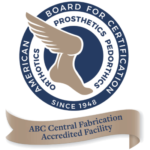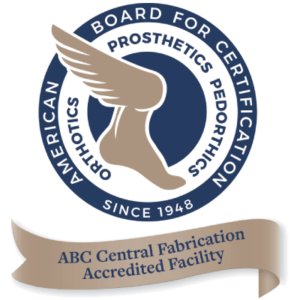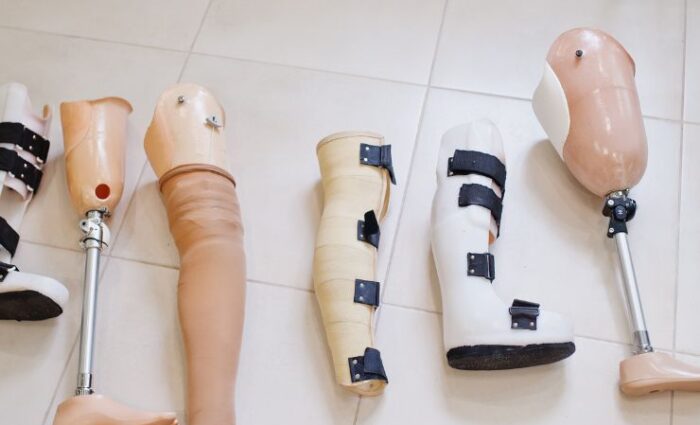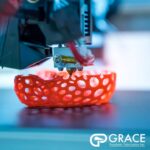Pediatric Prosthetics: Special Considerations for Young Patients
When it comes to pediatric prosthetics, creating the perfect fit requires a specialized approach. Children have unique needs as they grow, and ensuring that they can live active, comfortable lives is the top priority for Grace Prosthetic Fabrication. This article covers what parents need to know about pediatric prosthetics, highlighting the specialized care and considerations involved in crafting prosthetics for young patients.
Understanding Pediatric Prosthetics
Unlike adult prosthetics, pediatric prosthetics need to adapt to a growing body. A child’s limb development, activity level, and medical care are factors that influence the design, fit, and materials used in these devices. Because children grow rapidly, especially in their early years, their prosthetics must be frequently adjusted or replaced to support optimal growth and function.
Whether a child needs a prosthetic for a lower limb, knee, or foot, the fitting process prioritizes comfort, function, and adaptability. At Grace Prosthetic Fabrication, each device is customized with attention to both the physical and emotional needs of young patients, giving them confidence and mobility to explore the world around them.
Key Factors in Pediatric Prosthetic Design
Crafting prosthetics for young patients involves a series of specialized steps and considerations, many of which focus on growth and development. Here are some of the core factors that guide the design process:
- Growth and Frequent Adjustments
Children grow quickly, which means their prosthetic limbs must be designed to accommodate growth spurts. A prosthetic designed for a six-year-old, for instance, won’t be suitable after a year or two without adjustments. Grace Prosthetic Fabrication provides ongoing support to help families plan for these adjustments, ensuring that the prosthetic is consistently comfortable and functional. - Durability and Safety
Children are naturally curious and often engage in high-energy activities that require prosthetics to be durable and safe. Pediatric prosthetics must withstand the wear and tear of daily life and active play. Using lightweight, durable materials allows for maximum mobility while minimizing the risk of discomfort or injury. - Mobility and Balance
Since balance and gait are crucial aspects of learning to walk or run, prosthetic devices for young patients must support natural movement patterns. Pediatric prosthetic legs or lower-limb devices are carefully designed to foster balanced gait development. This is particularly important for above-knee or below-knee prosthetics, where maintaining stability and balance is essential. - Psychological Considerations
The emotional aspect of using a prosthetic limb is especially important for young patients. Children may feel self-conscious or frustrated with their prosthetic limb. To ease this transition, Grace Prosthetic Fabrication includes personalization options, allowing children to choose designs or colors that reflect their personality. Involving children in the customization process can make them feel more comfortable and confident with their prosthetic device.
Lower Limb Prosthetics: Unique Challenges and Solutions
Lower-limb prosthetics for young patients can range from below-the-knee prosthetics to more complex above-knee or hip-level prosthetics. Here are some of the unique challenges and solutions associated with these devices:
- Below-Knee Prosthetics
Below-knee prosthetics are often used for children who have lost part of their leg from the knee down. These devices are generally easier to fit and allow for a relatively natural gait, which is essential for young, active users. The design of these prosthetics focuses on stability, ensuring that they can support various types of movement, from walking and running to climbing. - Above-Knee Prosthetics
Above-knee prosthetics are more complex since they need to mimic the function of the knee joint. Advanced technology can be incorporated to create a prosthetic knee that responds to movement, providing flexibility and balance for the child. For younger patients, lighter materials are often used to make the device as manageable as possible, ensuring it doesn’t interfere with their ability to move naturally. - Feet Prosthetics
Pediatric prosthetic feet are designed to be flexible yet sturdy, providing the right amount of support while allowing natural foot motion. This type of prosthetic is crucial for children who are still developing their walking skills, as it enables a smoother, more natural gait. Many prosthetic feet for children are made with high-energy materials, allowing them to absorb impact during activities and reduce strain on the child’s residual limb.
Supporting a Natural Gait and Mobility
One of the primary goals of pediatric prosthetics is to foster a natural gait. Gait is essential in developing motor skills, balance, and coordination. When designing lower limb prosthetics, professionals at Grace Prosthetic Fabrication consider how the device will support a child’s unique gait and mobility requirements.
The proper gait support can vary depending on whether a child has a below-knee, above-knee, or other lower-limb prosthetic. The device’s design needs to allow enough flexibility to encourage natural movement while maintaining the strength and stability required for safe walking. This balance helps young patients adjust more easily, giving them confidence as they learn to walk, run, and play.
Importance of Regular Follow-Ups and Medical Care
Because a child’s body changes so rapidly, regular follow-ups are critical for ensuring the prosthetic device continues to fit comfortably and function properly. Routine adjustments prevent issues such as skin irritation, misalignment, or poor posture. These regular visits also allow prosthetic specialists to monitor the child’s development and make any necessary modifications to the prosthetic device.
Parents and caregivers play a vital role in monitoring their child’s comfort and mobility between visits. At-home care routines, like checking for skin irritations, bruising, or discomfort, can alert parents to potential issues before they become problematic. By maintaining open communication with their prosthetic team, families can ensure the prosthetic remains a positive, supportive element of the child’s life.
Contact Grace Prosthetic Fabrication for Pediatric Prosthetic Fabrication
Pediatric prosthetics open up a world of possibilities for young patients. Whether it’s running on the playground or walking hand-in-hand with their friends, these specialized devices enable children to embrace an active and fulfilling life. By focusing on growth, mobility, safety, and emotional well-being, Grace Prosthetic Fabrication is committed to providing prosthetics that empower children to thrive.
As medical advancements continue, pediatric prosthetics will only become more innovative, improving comfort and adaptability. For families and young patients, this means even more opportunities to achieve a natural gait, enjoy active lifestyles, and gain independence.
If you’re considering pediatric prosthetics for your child, reach out to Grace Prosthetic Fabrication to discuss your options. Our team is dedicated to providing high-quality, personalized solutions that help children achieve their full potential.






